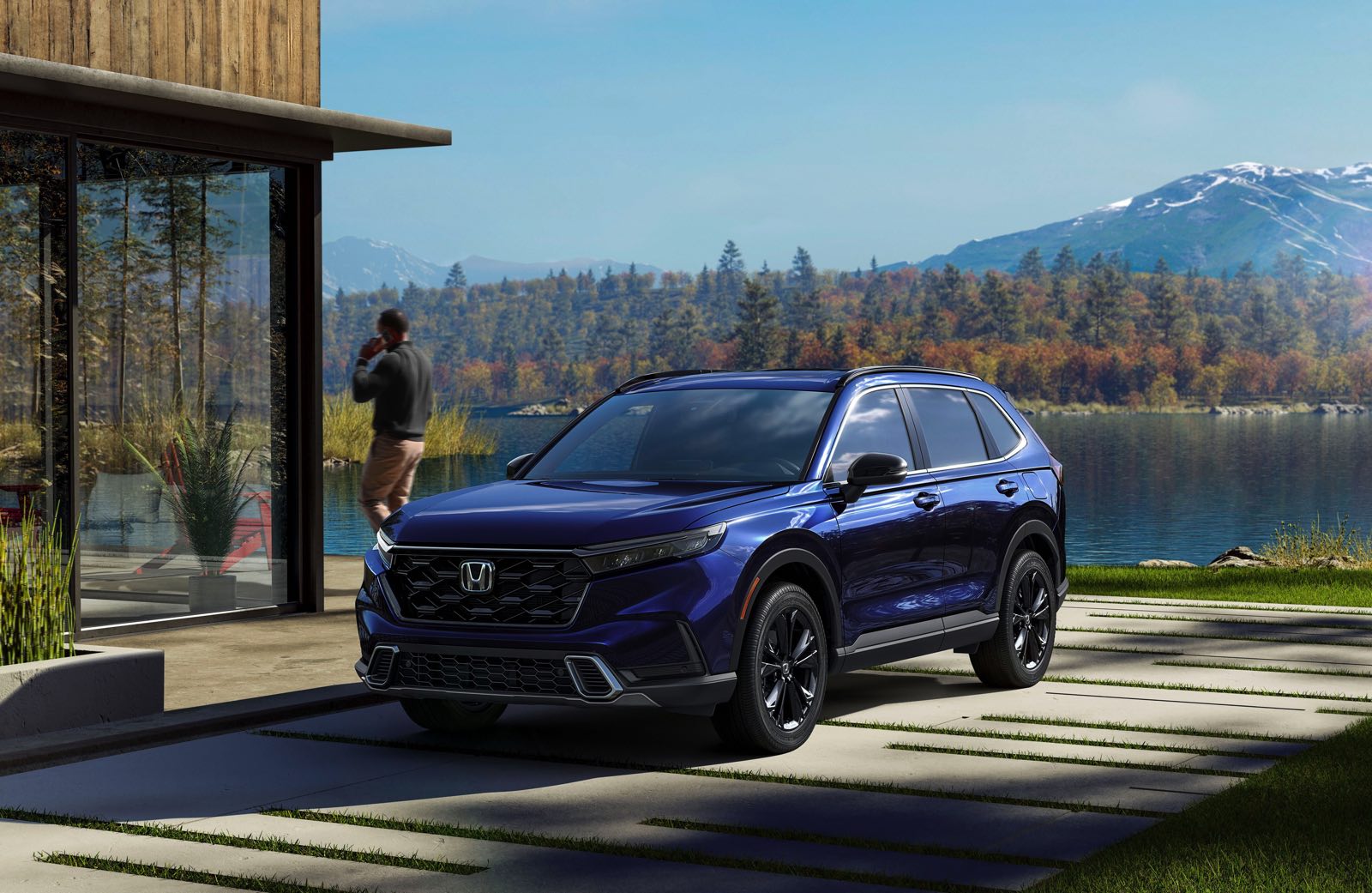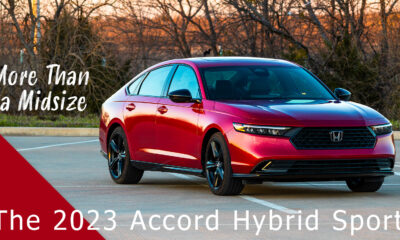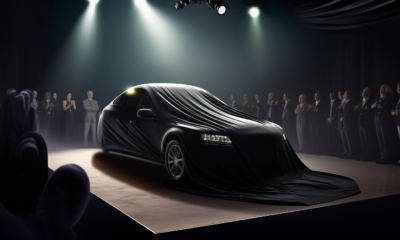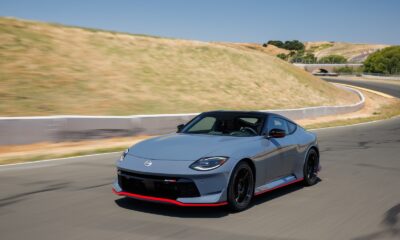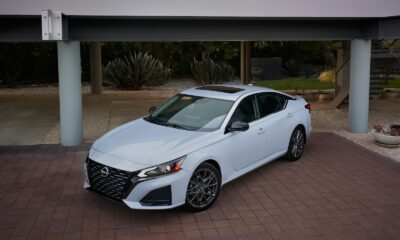Car Reviews
Honda’s CR-V Hybrid Sport Touring – HYBROW
Honda’s CR-V Hybrid Sport Touring
HYBROW
For my folks, it was Honda’s CR-V…or nothing. Beginning with the compact crossover’s 1st-generation model in 1998, they drove it about 30,000 miles when, in need of new tires and a windshield, they traded it – in otherwise excellent shape – for the second-generation CR-V. That version offered more space within bodywork just this side of awkward. Mom and Dad self-corrected in ’09, buying a 3rd-gen, which is still driven by my brother after our mom turned in her keys. The point? In our family the CR-V has an enduring appeal, and with the ’09 approaching its 15th year, that appeal still holds; it may be used by my brother’s teenage son in the not-too-distant future.
Honda’s product team pays close attention to legacy, and while the newest CR-V is well removed from 1998 or 2009, no one was inclined to blow up the recipe. Despite dimensions that have grown larger, the CR-V continues to offer a compact footprint relative to some of its competition. On a wheelbase of 106 inches, the CR-V extends almost 185 inches in length, 73.5 inches in width and extends 66.5 inches upward. Its stance is tidy, sheetmetal attractive – if veering into innocuous – and given the rate at which Honda sells its CR-V, you’re gonna’ see ‘em everywhere.
In this new iteration, introduced for the 2023 model year, the design seems more upright and slab-sided, and that impression is enhanced by a more vertical windshield and upright A-pillars. With that, the dash doesn’t seem to reach toward the CR-V’s grille opening – as it has in the past – and the A-pillars don’t intrude into your field of vision. All of it is slightly retro in its vibe, and if you confront congestion on a regular basis (and your head isn’t staring at your phone) you’ll enjoy the enhanced view of the road…down the road.
In back, the hatch opens with a push of the remote fob, after which you have easy access to some 36 cubic feet of cargo volume with the second seat upright. This is real, cubic volume space, making runs to Costco far less problematic when compared to getting there in a Civic. Fold the second seat down – and it folds almost flat – and you’ll enjoy even more unrestricted load space.
If there’s a visual catch in this git-along it’s the amount of front overhang, that sheetmetal ahead of the front axle. Like many, if not most, of the front-wheel drive/all-wheel drive platforms on today’s showrooms, the front bias is made very clear in the front fascia. Some OEMs do a better job of minimizing it than others (Dodge’s new Hornet, which just left the driveway, has a nose more tucked-in, although also more anonymous), and the CR-V is far from the worst. But as most of us paying attention know, those cars with rear-wheel drive and a visual rear-wheel bias have the more upscale look, and none of that conveys in designs like the CR-V. With that as the context, the CR-V in its Sport Touring trim looks like the $40K it costs.
Inside, I was even more impressed. With leather-trimmed seating, steering wheel and shift lever(!), the touch points are a cut above what we often see in volume crossovers. And Honda’s current take on dash design and infotainment integration is about as good as this design period will get. The instrumentation is clear, ventilation controls are completely separate, and the audio can be adjusted in one step and not – notably – three. Add into this mix that conventional transmission lever, and this is a vehicle even the thickest valet (that’d be me, if I parked cars for a living) can figure out.
Ultimately, what’s under the hood, Honda’s newly reengineered hybrid drivetrain, is the reason we’re here. Employing a 2.0 liter 16-valve with 145 horsepower and 138 lb-ft of torque, the hybrid addition is comprised of an AC motor delivering 181 horses and 247 lb-ft of torque, for a combined output of 204 hp and 247 lb-ft of torque. With a curb weight of just under 4,000 pounds, you have an EPA estimate of 40 miles per gallon in the city and 37 miles per gallon combined.
While wishing the transmission was something other than a CVT, the CR-V’s Sport mode reduces the drone, and will – according to Car and Driver – deliver you to 60 in under 8 seconds. It feels even more responsive, and while you’ll not confuse this with Honda’s Civic Type R, you can go about your business without wondering if the Ram driver behind you is going to stop; a responsive throttle almost guarantees safe passage. If you’re less than sporty, there’s also Normal, Econ and Snow modes, depending on your mood…and the mood of the road surface and weather.
My folks have passed, but our affection for Honda’s CR-V is enduring, even as their ’09 approaches its 15th season. And with this latest hybrid with its standard all-wheel drive, it’s every season.



